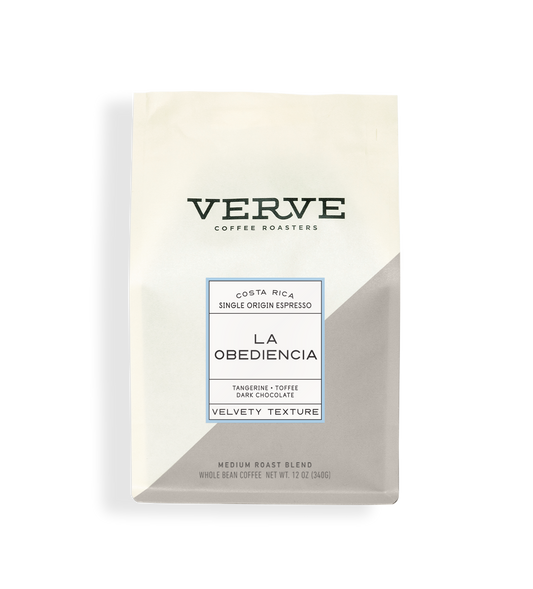SOE Single Origin Espresso – Perfect for Handcrafted Brewing Methods
SOE Single Origin Espresso – Perfect for Handcrafted Brewing Methods
Blog Article
Exploring the Abundant Tastes of Coffee Beans: a Deep Study Coffee and Blended Coffee Beans
When you check out the rich tastes of coffee beans, you discover a complex globe where each range brings its own personality to your cup. As you browse with the art of espresso and the creative thinking behind mixed coffees, you'll start to appreciate the nuances that make each sip special.
The Origins of Coffee Beans: Discovering Terroir and Flavor Profiles
When you take a sip of coffee, you're not simply enjoying a beverage; you're experiencing an abundant tapestry of flavors formed by the beans' origins. Each region generates distinct taste profiles affected by soil, environment, and altitude. For example, beans from Ethiopia frequently rupture with bright, fruity notes, while those from Colombia have a tendency to use a balanced, nutty sweetness.
As you explore various beginnings, you'll observe exactly how terroir-- the environmental factors impacting a plant-- plays an important duty - Single Origin Espresso. The same coffee variety can taste dramatically different depending upon where it's expanded
When you think about these variables, you begin to value the complexity behind your mug. Each sip tells a tale of the land and the farmers that supported the beans. So, next time you indulge, consider the trip your coffee took before it reached your hands, and enjoy those detailed tastes that reflect its origin.
Comprehending Coffee: The Art and Scientific Research Behind the Mixture
When you consider coffee, it's not nearly the strong taste; it's likewise concerning the strategies that bring it to life. Understanding just how various prep work techniques effect taste can transform your brewing experience. Allow's discover the complexities of espresso preparation and reveal the special taste profiles that make each cup special.
Coffee Prep Work Methods
Espresso prep work is both an art and a science, integrating precise techniques with a deep understanding of coffee. To begin, you'll wish to pick top quality, freshly baked beans and grind them carefully for optimal extraction (Single Origin Espresso). The grind size is vital; also crude, and your coffee will be weak, too great, and it'll be bitter
The result ought to be a rich, luscious espresso with an attractive layer of crema on top. With method, you'll understand these methods.
Flavor Accounts Explained
The globe of espresso supplies an abundant tapestry of taste accounts that can boost your coffee experience. Light roasts frequently showcase bright acidity and dynamic tastes, while dark roasts present much deeper, bolder tones.
A well-crafted mix may balance the bright notes of an Ethiopian bean with the abundant, chocolatey touches of a Brazilian bean. Accept the trip of finding espresso's varied tastes, and you'll transform your coffee ritual right into an amazing journey.
Handling Approaches: Exactly How They Influence Flavor and Fragrance
While it could seem that the origin of coffee beans is one of the most substantial factor in establishing their taste and scent, the processing approaches utilized post-harvest play an equally important duty. You'll discover that these methods can considerably alter the final taste account of your cup.
For instance, the washed procedure removes the fruit from the beans prior to fermentation, often leading to a cleaner, brighter taste. The natural procedure leaves the fruit intact during drying out, resulting in a sweeter, fruitier profile.
Various other techniques, like honey handling, strike an equilibrium, enabling some fruit mucilage to continue to be, supplying a distinct intricacy.
Each processing strategy communicates with the beans' integral qualities, improving or silencing particular tastes and aromas. When you drink that espresso or mixed coffee, bear in mind that the journey from cherry to cup is influenced not simply by origin but additionally by just how those beans were refined.
Toasting Techniques: Opening the Complete Potential of Coffee Beans
Roasting strategies are essential for disclosing the full possibility of coffee beans, as they change raw, green beans into the fragrant, savory coffee you enjoy. The option of roasting approach-- light, tool, or dark-- considerably affects taste accounts. Light roasts preserve the beans' natural acidity and fruity notes, while medium roasts balance sweet taste and richness. Dark roasts, on Single Origin Espresso the other hand, highlight bold, great smoky tastes.
You can try out roasting temperatures and times to discover your perfect mixture. A slower roast at reduced temperature levels permits intricate tastes to create, while a quicker roast can escalate anger. Take notice of the splits throughout toasting; the very first fracture indicates a light roast, while the second split signals a dark roast. By understanding these methods, you'll expose a world of taste, raising your coffee experience to new heights. Appreciate every sip, recognizing the treatment that went into your mug!
The Magic of Blended Coffee: Producing Special Taste Experiences
Creating a special flavor experience with mixed coffee can change your morning routine right into an expedition of taste. By integrating different beans from different regions, you can disclose a harmony of flavors that boost your mug to new heights. Each mix offers a distinctive account, stabilizing acidity, body, and sweetness to create something truly unique.
When you select a mix, you're not simply choosing a coffee; you're choosing a trip throughout diverse landscapes and cultures. Trying out various combinations enables you to uncover your personal faves, whether you delight in fruity notes or abundant, chocolatey touches.

Tasting Notes: Acknowledging the Subtleties in Your Cup
As you sip your coffee, you may observe a range of flavors dancing on your palate, each exposing the intricacies of the beans. You might taste the brilliant level of acidity reminiscent of citrus or the deep, abundant notes akin to dark chocolate. The sweetness might stimulate honey or sugar, stabilizing the overall profile wonderfully.
Focus on the body of the coffee-- does it really feel ventilated and light, or is it complete and luscious? The coating, also, offers clues; a remaining aftertaste may hint at nuttiness or floral undertones.

Do not fail to remember to check out the special attributes of different origins, as each area presents distinctive tastes - Single Origin Espresso. Ethiopian coffees often existing fruity notes, while Colombian beans may showcase an extra spherical sweetness. By recognizing these subtleties, you'll grow your recognition for every cup, boosting your coffee experience to new heights

Developing Techniques: Taking Full Advantage Of Flavor Removal for each Bean
When you explore the numerous brewing approaches, you'll find that each method can dramatically affect the flavor profile of your coffee. From French press to pour-over, each approach removes different substances, improving or muting certain notes. As an example, using a French press permits oils to stay in the mixture, producing a richer taste, while pour-over highlights clarity and illumination.
Temperature and grind size additionally play vital roles. A coarser grind functions best for chilly mixtures, while a great grind is suitable for espresso. Try out water temperature-- in between 195 ° F and 205 ° F-- can reveal covert tastes, too.
Don't ignore steeping time; a quick removal can lead to sour notes, while over-extraction may produce anger. By adjusting these variables, you can maximize flavor extraction and absolutely raise your coffee experience. Enjoy the journey of uncovering what approach best fits your taste buds!
Regularly Asked Questions
What Is the Ideal Water Temperature for Brewing Coffee?
The excellent water temperature for developing coffee's between 195 ° F and 205 ° F. If you use water that's as well hot, you'll over-extract tastes; as well cool, and you will not remove enough. Go for that wonderful area for the finest mixture!
Exactly How Does Grind Size Impact Coffee Taste?
Work dimension substantially influences coffee taste. Better grinds remove more oils and tastes, causing a bolder preference, while coarser grinds return a lighter taste. Readjusting work dimension aids you attain your wanted coffee account.
Exist Health And Wellness Benefits Associated With Drinking Coffee?

What Is the Distinction In Between Arabica and Robusta Beans?
Arabica beans are smoother and sweeter, commonly including fruity flavors, while robusta beans are stronger with a bitter preference and greater caffeine content. You'll notice these distinctions in scent and brewing experience.
How Can I Store Coffee Beans for Freshness?
To save coffee beans for quality, keep them in an airtight container, far from warmth, wetness, and light. You'll maintain their taste much longer if you just grind what you require right before developing.
Discovering the Rich Flavors of Coffee Beans: a Deep Dive Into Espresso and Blended Coffee Beans.
When you discover the abundant flavors of coffee beans, you discover a complicated world where each selection brings its own character to your cup.When you take a sip of coffee, you're not simply enjoying a beverage; you're experiencing a rich tapestry of tastes shaped by the beans' beginnings.Roasting techniques are essential for exposing the full capacity of coffee beans, as they transform raw, green beans into the aromatic, savory coffee you take pleasure in.As you sip your coffee, you may notice a spectrum of tastes dancing on your palate, each exposing the intricacies of the beans.
Report this page